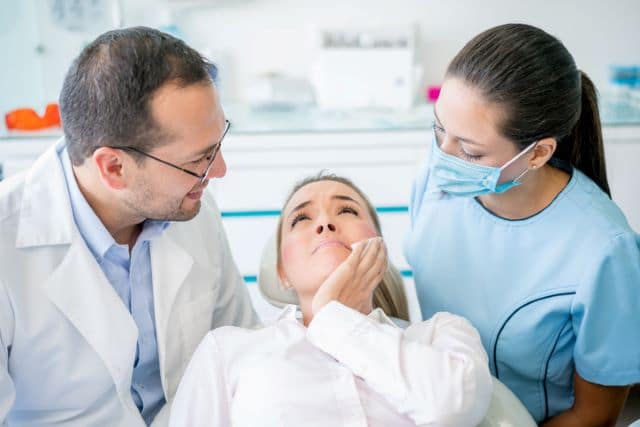Dental emergencies can strike at any time—during a meal, a sports game, or even in the middle of the night. In these situations, knowing how to respond before seeing a dentist can make a significant difference in outcomes. While emergency dentists are trained to handle urgent dental problems, your actions in the first few minutes are crucial. This article explores practical first aid tips for common dental emergencies and provides insights on how these actions align with Australian dental regulations and standards.
What Is a Dental Emergency?
A dental emergency refers to any oral health issue that requires immediate attention to relieve pain, stop bleeding, or save a tooth. Some of the most common dental emergencies include:
- Knocked-out (avulsed) teeth
- Broken or chipped teeth
- Severe toothaches
- Dental abscesses
- Lost fillings or crowns
- Injuries to the soft tissues of the mouth
Emergency dentists are equipped to deal with these situations, but your initial care can affect both pain levels and treatment success.
First Aid Tips for Common Dental Emergencies
1. Knocked-Out Tooth
Time is critical when a tooth is knocked out. Prompt first aid and seeing an emergency dentist within 30 minutes are critical for successful reimplantation and long-term oral health. If you act quickly, emergency dentists may be able to re-implant the tooth successfully.
What to do:
- Handle the tooth by the crown (not the root).
- Rinse it gently in saline or milk—avoid scrubbing.
- Try to place it back in its socket if possible.
- If reinsertion isn’t an option, store it in milk or saliva (not water).
- See an emergency dentist immediately—preferably within 30 minutes.
According to Australian dental regulations and standards, time-sensitive intervention is essential in trauma cases, and storing the tooth correctly is crucial for successful reattachment.
2. Severe Toothache
A persistent and intense toothache can indicate infection, decay, or an abscess.
First aid tips:
- Rinse your mouth with warm saltwater to reduce bacteria.
- Floss gently to remove any trapped food particles.
- Apply a cold compress to the outside of your cheek to reduce swelling.
- Do not apply aspirin directly to the tooth—it can burn the gum tissue.
Emergency dentists will typically perform a diagnostic exam and may take an X-ray to determine the underlying cause. In Australia, all emergency procedures must comply with infection control protocols under national standards.
3. Broken or Chipped Tooth
Accidents can cause parts of a tooth to break off, leading to sensitivity or sharp edges that cut soft tissue.
What to do:
- Rinse your mouth with warm water.
- Save any pieces of the broken tooth in milk or saliva.
- Cover any jagged edges with dental wax or sugar-free gum.
- Use a cold compress to reduce swelling.
Emergency dentists may use dental bonding, crowns, or veneers to repair the damage, depending on its severity. Per Australian dental regulations and standards, any restorative work must use biocompatible materials and be properly documented for follow-up care.
4. Dental Abscess
A dental abscess is a serious infection that forms around the root of a tooth or in the gums. It can lead to fever, swelling, and even life-threatening complications if left untreated.
First aid steps:
- Rinse with warm saltwater multiple times a day.
- Do not attempt to pop or drain the abscess.
- Take over-the-counter pain relief if necessary.
- Seek immediate attention from an emergency dentist.
The Dental Board of Australia emphasizes prompt treatment of abscesses due to the risk of systemic infection. Emergency dentists are trained to provide antibiotics and safe drainage under regulated clinical settings.
5. Soft Tissue Injuries
Biting your tongue, lips, or inner cheek can result in painful bleeding wounds.
First aid care:
- Rinse your mouth gently with a saltwater solution.
- Apply pressure with a clean gauze pad to stop bleeding.
- Use an ice pack to control swelling.
If bleeding doesn’t stop after 15 minutes, visit an emergency dentist or hospital. In accordance with Australian dental regulations and standards, any treatment involving bleeding or soft tissue trauma must follow hygiene protocols to prevent infection.
Why Timely First Aid Matters
Applying first aid in a dental emergency can preserve teeth, reduce pain, and prevent complications. Australian emergency dentists work within a framework of national safety and quality standards, meaning your early efforts can help them deliver more effective care.
For instance, the Australian Dental Association (ADA)recommends patients keep a dental first aid kit at home, which includes:
- Sterile gauze
- Dental wax
- Saline solution
- Pain relievers
- A small container with a lid (to transport a knocked-out tooth)
Emergency Dentists: Your Next Call
After providing first aid, the next essential step is to contact a qualified emergency dentist. Most clinics in Australia now offer emergency slots or after-hours services. Check whether your local provider adheres to the Australian Health Practitioner Regulation Agency (AHPRA) standards, ensuring their emergency care meets national guidelines.
Online directories, such as the ADA’s “Find a Dentist” tool, can also help locate emergency dentists near you. If the emergency happens outside business hours, some hospitals offer on-call dental services.
Dental emergencies can be alarming, but knowing what to do before reaching the clinic can make a huge difference. From managing knocked-out teeth to easing a painful infection, quick and correct action supports better outcomes. Emergency dentists play a critical role in Australian healthcare, and adhering to Australian dental regulations and standards ensures your treatment is both safe and effective.
So whether you’re at home or on holiday, understanding these first aid tips empowers you to handle dental crises with calm and confidence—until professional help takes over.

